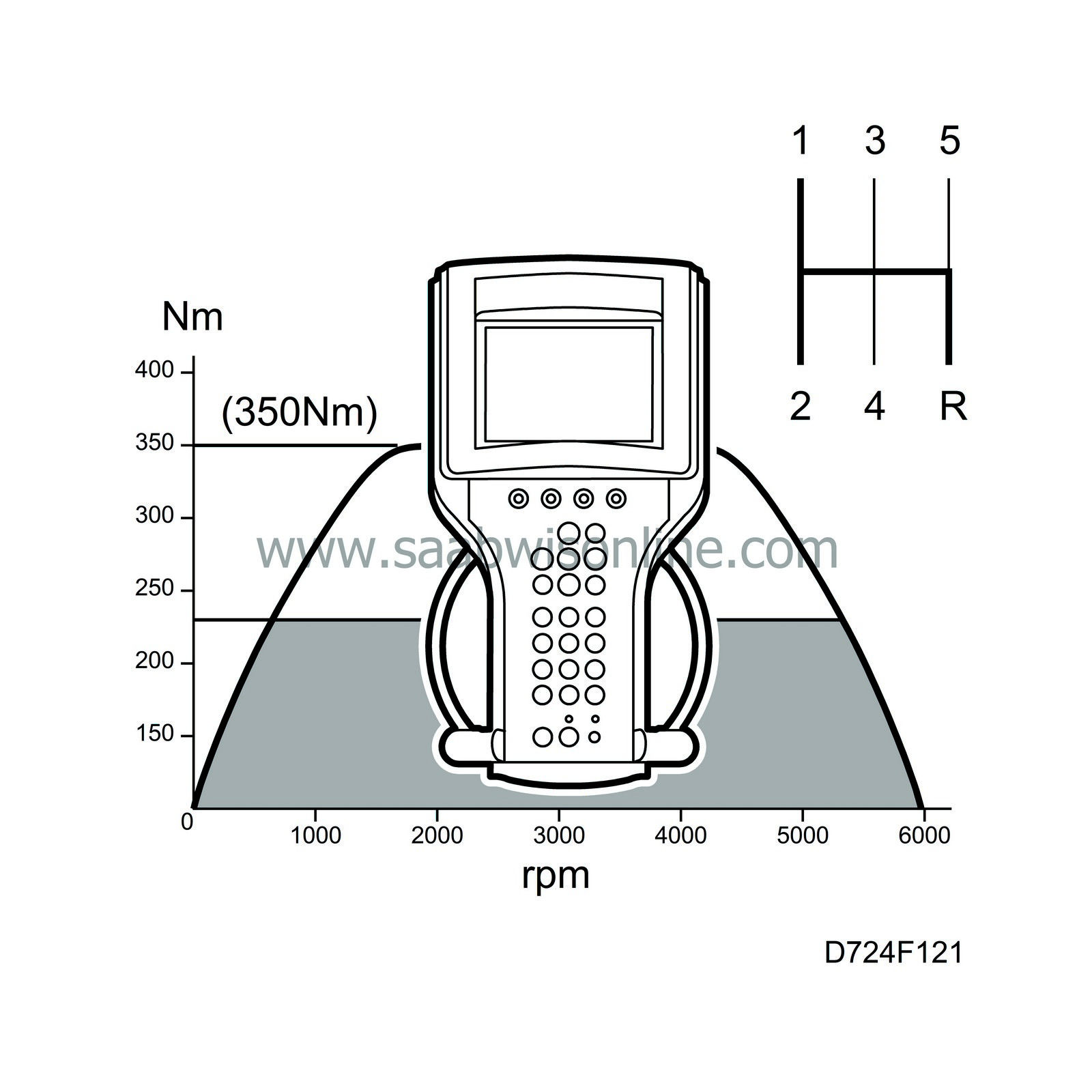Power too low.
Read the instructions below then
start the fault diagnostic procedure.
Symptom: Low power.
Fault symptoms
Low power.
Conditions
The following conditions apply for the current fault symptom:
|
•
|
No diagnostic trouble codes in the car with the current symptom description.
|
|
•
|
Pedal cable adjusted correctly.
|
Diagnostic help
The three pressure sensors are checked first to make sure they do not deviate more than 10 kPa from each other when the engine is stationary. This check is carried out because the air mass flow is later compared with the intake pressure and must therefore be correct. If there is a deviation in the air mass flow then air leaks are checked for first before the mass air flow sensor is suspected of being faulty.
Then, the charge air control, knock control and fuel supply are checked. Knock control is a normal engine function.
It is difficult to determine the amount of knocking to allow, as this depends on the circumstances.
The following factors increase susceptibility to knocking:
|
•
|
High coolant and outdoor temperature.
|
Functions in the diagnostic tool related to the fault:
|
•
|
Atmosphere absolute pressure, unit kPa.
|
|
•
|
Charge air absolute pressure, unit kPa.
|
|
•
|
Manifold absolute pressure, unit kPa.
|
|
•
|
Airmass deviation from requested, unit %.
|
|
•
|
Airmass deviation from calculated, unit %.
|
|
•
|
Max. engine torque at actual RPM, unit %.
|
|
•
|
Charge air adaptation, unit %.
|
|
•
|
All values in group ”AIRMASS DEMAND”.
|
|
•
|
Activate charge air control valve.
|
For more information, see
 and
and
 .
.
Checking the wiring
Jiggle the wiring harness at several points and in different directions to detect intermittent breaks and short circuits. Observe the multimeter, diagnostic tool or test lamp during the check.
 and
and
 .
.



